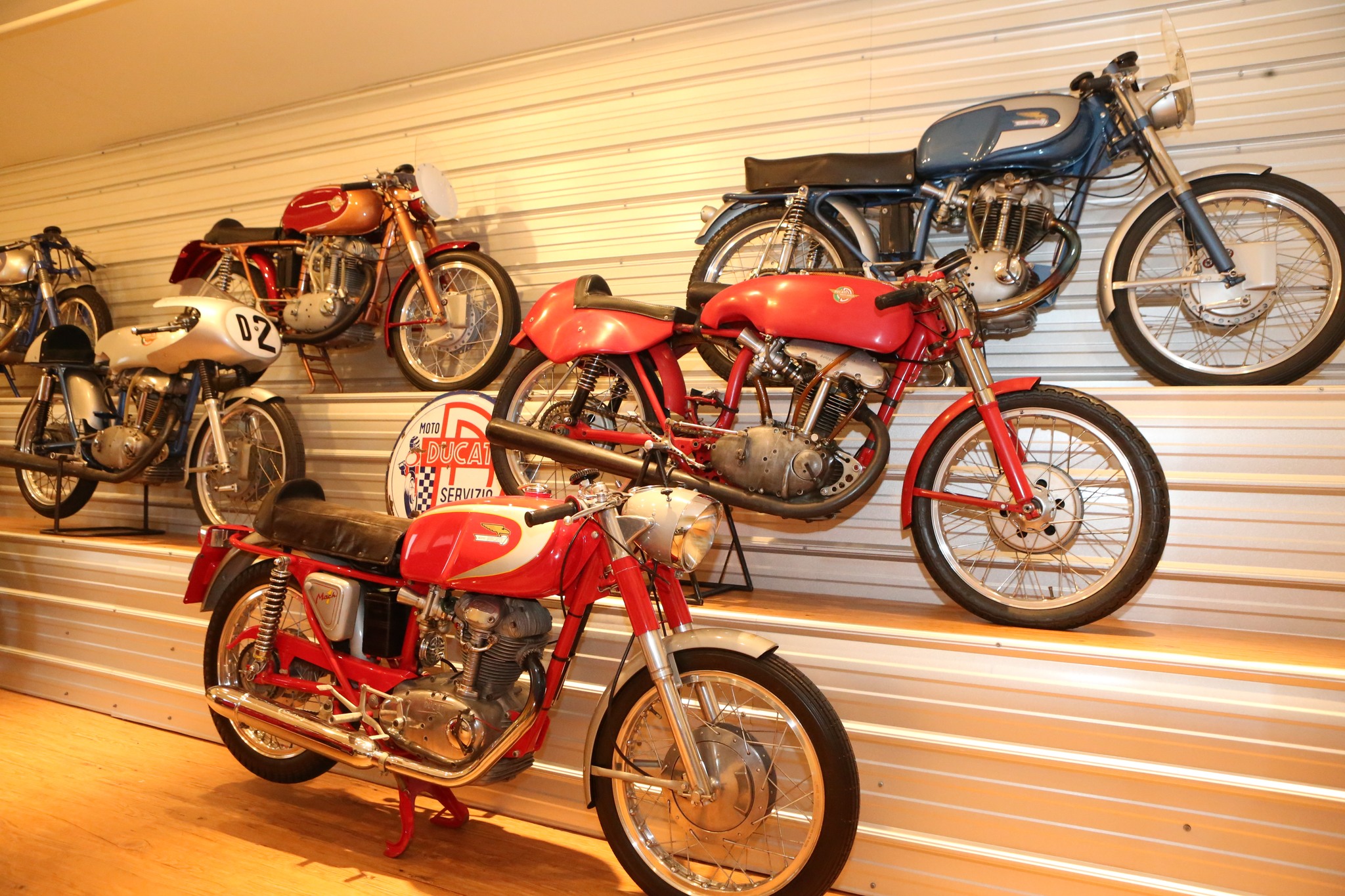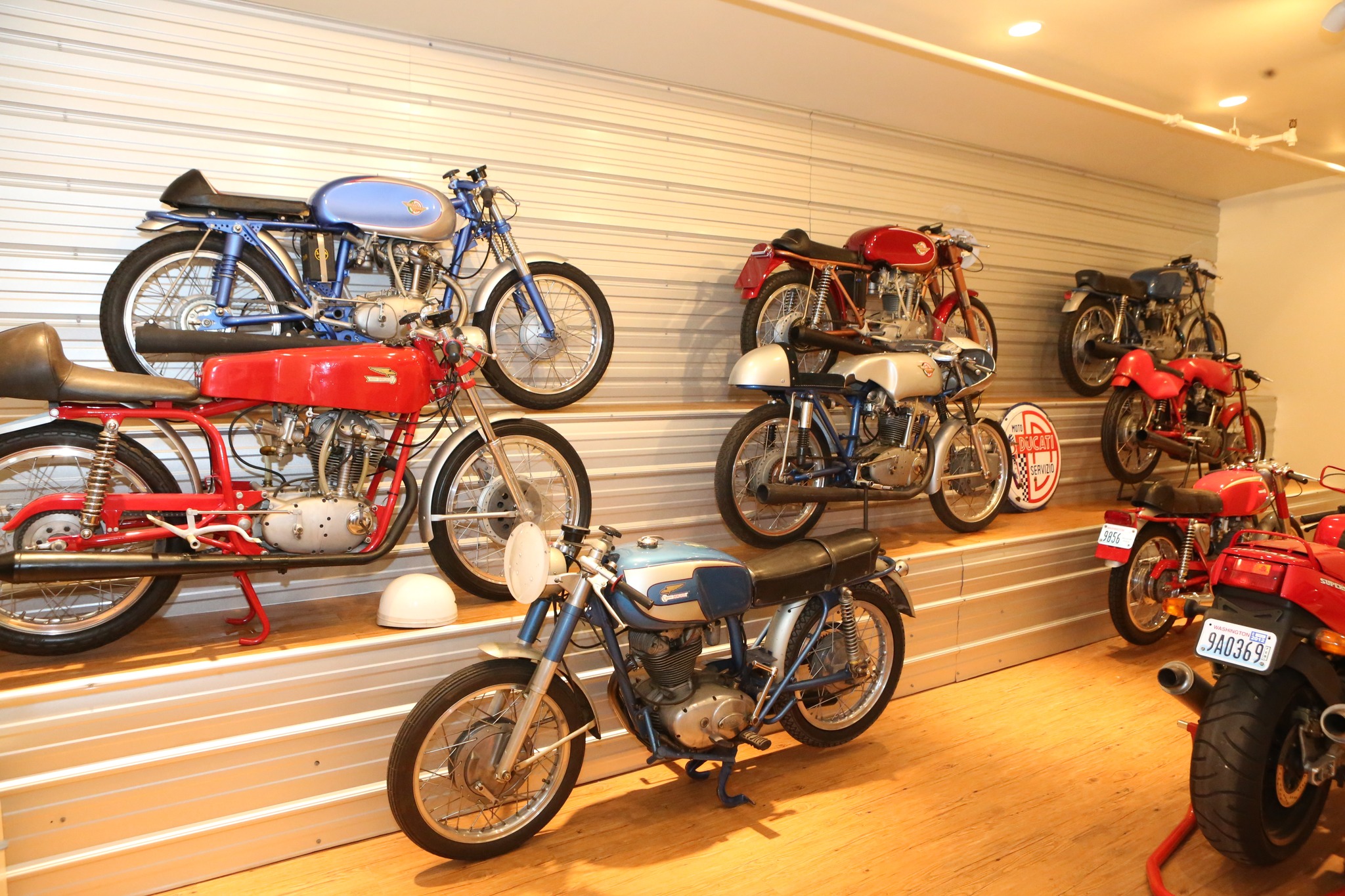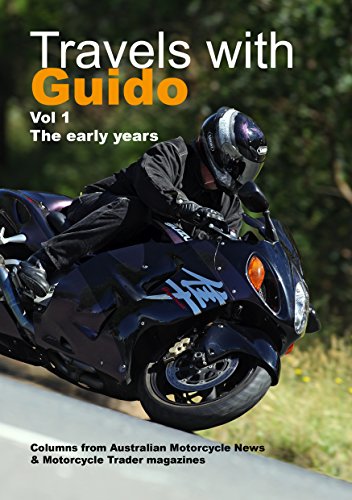Motorcycle Investor mag
Subscribe to our free email news
Ducati Singles
(by Ian Falloon, Mar 2022)

Looking
back to simpler times
While Ducati is
largely characterised by their adherence to the
90-degree L or V-twin, this
wasn’t always so. For their first twenty-five years
Ducati only produced
singles, and these were varied. An eclectic range of
two-stroke, pullrod,
pushrod and overhead camshaft four-stroke singles
sustained Ducati throughout
the 1950s and 1960s. And at the top of the pile were a
small number of limited
edition catalogue racers available only to those with
“factory connections.”
In the early 1950s
most Italian manufacturers saw racing as pivotal for
sales, but initially
Ducati only produced small capacity motorcycles based on
the Cucciolo clip-on
engine. Seeking victory in the 1955 Motogiro d’Italia
road race Ducati’s
managing director Dott. Giuseppe Montano hired Ing.
Fabio Taglioni to design a
completely new motorcycle. The resulting 100cc Gran
Sport was the first Ducati
designed and built with racing in mind, and its success
ensured that racing
would become a predominant feature in the company’s
history.
Taglioni always worked
with surprising speed and showed a remarkable ability to
get designs right the
first time. Few engines exemplified this more than the
Gran Sport, later
nicknamed the Marianna. Conceived for racing first and
production second it
proved virtually unbeatable in the Italian road races,
and formed the basis of
the Grand Prix desmodromic racers and a range of racing
and production singles
through until 1974. Many of its design criteria carried
through to the later
90-degree V-twins. Even some current engines, notably
the two-valve twins and
Testastretta owe much to the Marianna.
The Marianna’s success
saw Ducati grow to become one of the largest motorcycle
manufacturers in Italy.
By 1955 production levels were around 20,000 a year and
employees numbered more
than 700 so there was justification for an escalation of
racing development.
Not content with their victories in the MSDS (macchine
sport derivate dalla
serie) category for production sports machines, Montano
and Taglioni wanted to
win the modified sports machine class. For this Taglioni
created the Bialbero,
or double camshaft, 125 Grand Prix, officially unveiled
on 25 February 1956.
Apart from the
cylinder head and an additional fifth gear, the Bialbero
was ostensibly a
Marianna, the twin overhead camshaft layout providing
around 16 horsepower and
revving to 11,500 rpm. With a handlebar fairing and
streamlined seat the top
speed was around 170 km/h. The basic chassis was also
that of a Marianna, but
with larger magnesium Amadoro brakes. But the Bialbero
was outclassed in the
1956 Italian Championships events and Taglioni turned to
desmodromic valves on
the factory machines. This left the Bialbero as a
catalogued racer available to
privateers in limited quantities.
For 1957 the Bialbero
received a new cylinder head casting, with a distinctive
polished alloy gear
cover. It may have been outclassed in Grand Prix racing
but as a privateer
racer the 125 Bialbero was incredibly successful. In
England during 1958 Fron
Purslow won a succession of races, this carrying on with
Mike Hailwood after he
purchased Purslow’s machine.
125 Championship
victories were scored on Bialberos between 1957 to 1959
in countries as diverse
as Holland, Switzerland, Brazil, Venezuela and Sweden.
After the factory
officially retired from Grand Prix racing at the end of
1959 some of the works
125 Desmos had their Desmo cylinder heads substituted
with Bialbero cylinder
heads and some Bialberos were built with four-speed
Formula 3 crankcases. Sold
to privateers, these were successfully raced for many
more years.
The two Biaberos in
this collection are both 1957 examples, the red bike
presumably ridden by one
of Ducati’s star riders of the 1950s, Leopoldo
Tartarini. Tartarini later went
on to found Italjet. Ricardo Fargas, a leading Spanish
Ducati rider during the
1960s, raced the silver 125 Bialbero in Spain. While
possibly fifty Biaberos
were produced, only a handful survives.
As official factory
involvement in Grand Prix racing gradually diminished,
Ducati looked to the
Italian championships for racing glory. Although Ducati
was strongly committed
to Grand Prix racing during 1958 the release and sales
success of the 175 Sport
in 1957 resulted in more emphasis on developing the
production range. So for
the budding privateer, two Formula 3 catalogue racers,
the 125 and 175 F3, were
offered in 1958 and were subsequently available as
catalogue models for 1959.
At the time these were extraordinarily expensive, the
125 more than a 500cc
Matchless G50, so only a few were sold.
The 125 Formula 3 was
ostensibly an evolution of the 125 Marianna. The
sand-cast crankcases were
similar, but were smooth cast without finning on the
sump, as on the 125 Sport.
But in just about every respect the 125 Formula 3 was
different to the
production 125 Sport. Shared with the Marianna were the
four-speed gearbox, and
straight-cut primary gears and bevel gears. Unique to
the F3 were mirror image
rocker covers, different camshaft covers and shorter
camshafts. As on the
Marianna the sand-cast F3 cylinder head had the exhaust
retained by studs. An
indication of the F3’s uniqueness was virtually none of
the engine gaskets were
interchangeable with a production overhead camshaft
single.
Although patterned
after that on the road versions, the single downtube
frame was also quite
different. It was lighter and lower, with a lower
steering head, shorter
swingarm, and a shorter 35mm fork. Despite their obvious
race orientation, most
F3’s also came with complete street equipment that
included a headlight,
muffler, taillight, horn, number plate holder, and
centre-stand. The 125 F3 was
particularly successful during 1963, winning national
125 titles in Italy,
Canada, Argentina and Switzerland. This was repeated in
Italy during 1964, 125
F3s still winning Italian 125cc events through 1966.
Along with the 125 F3
a larger 175 F3 was also available from mid-1958.
Although it looked
similar the 175 F3 differed significantly to the 125 and
also shared virtually
nothing with the production 175 Sport. The 175 F3
crankcases included a wider
front engine mount and as on the 125 the cylinder head
was also quite different
to the production 175, with mirror image rocker covers
and specific cam bearing
housings. The 175 F3 frame followed the style of the 125
F3, with the updated
swingarm pivot and pinch bolts, but was slightly taller,
with a longer 35mm
fork. The 175 F3 shared the 125’s 18-inch wheels but now
included the same
Amadori twin scoop 180mm magnesium front brake as on
most Bialbero 125 Grand
Prix machines.
The 175 F3’s first
major success was at Monza in 1958 in the 175 F3 support
race for the Nations
Grand Prix. Here Franco Villa rode a factory-prepared
175 F3 to win at an
average speed of 142.005 km/h. This result heralded the
beginning of a
reasonably successful racing career for these beautiful
little machines. After
Villa’s success at Monza in 1958, Franco Farnè,
accompanied by mechanic Ugo
Mastroela, travelled to America.
Farnè’s specific
purpose was to promote the new range of production
overhead camshaft singles in
the US. Farnè was spectacularly successful and rode the
175 to victory in the
1959 250cc event at Daytona, following this with seven
more victories
throughout the US and Canada until he returned to Italy
in July.
During 1961 the
production overhead camshaft single grew to 250cc and
Ducati offered a limited
number of 250 Formula 3s alongside the regular 250
Diana. These looked similar
to the Diana, but as with all F3s virtually no parts
were interchangeable.
Unlike the 125 and 175
the 250 cylinder head also came with bosses for
desmodromic closing rocker
spindles and some factory-supplied examples had a
desmodromic cylinder head.
The carburettor was now a larger Dell’Orto SSI 29A and
the 250 F3 produced a
claimed 23 horsepower at 8,200 rpm. Although similar to
the 175 F3, the 250
engine would still fit a 175 F3 frame, the single
downtube 250 F3 frame
differed in details.
The swingarm was
longer the wheels 19-inch. The front brake for 1961 was
a 200mm Amadori with
twin air scoops, similar to the 175 F3 but slightly
larger. As the 250 F3 was
larger and heavier than the 175 F3 it didn’t achieve the
same success or endear
an equivalent following. Intended for larger framed
American riders it was
arguably overweight, offering little advantage over a
well-prepared Diana Mark
3 for considerably less outlay.
Ducati took the
limited edition factory racer to another level in 1965
with the release of the
250 and 350 SC (Sport Corsa). The SC (Sport Corsa) was a
factory racer, built
in extremely limited numbers, one of the first
travelling to Sebring with
Franco Farnè for an FIM sanctioned event following
Daytona in March. Run in
conjunction with the famous 12-hour sports car race,
Farnè not only won the
350cc class but finished 10th overall.
The wider sand-cast
crankcases were designed to accommodate the double
cradle frame and included a
significantly wider rear engine mount than the
production models and previous
F3. Inside the crankcases was a close ratio five-speed
gearbox and straight-cut
primary gears. Ignition was by twin spark plugs, and
carburetion for the 250 SC
was a Dell’Orto SSI 30A. Ducati claimed 34 horsepower at
8,500rpm. For 1966 the
250 SC received a few updates. 200mm Oldani brakes front
and rear replaced the
Grimeca, and a 14.5 litre fibreglass tank and humpback
solo seat fitted.
The essential
dimensions were unchanged and while the 1,320mm
wheelbase was moderate, the
250’s 115kg was excessive. Ducati no longer provided
optimistic power figures,
instead they claimed a top speed of 190 km/h for the 250
SC.
The SCs were undoubtedly
extremely beautiful creations but were too heavy and the
double cradle frame
offered little advantage over the standard single
downtube type. They weren’t
spectacularly successful but paved the way for the next
racer, the SCD (Sport
Corsa Desmo). This would see the singles out until 1972.
By this time there was
no future for the four-stroke single in international
road racing.

-------------------------------------------------
Produced by AllMoto abn 61 400 694 722
Privacy: we do not collect cookies or any other data.

Archives
Contact





